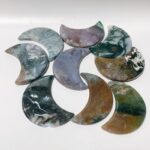Quartz, a naturally occurring mineral, has been prized for centuries for its exceptional properties and beauty. From ancient civilizations to modern industries, quartz continues to play a crucial role, unlocking countless opportunities and shaping our technological advancements.

Quartz: A Natural Wonder
Quartz is the second most abundant mineral in the Earth’s crust, composed primarily of silicon and oxygen atoms. Its crystal structure, characterized by a hexagonal lattice, grants it a remarkable array of physical and chemical attributes.
-
Exceptional Hardness: Quartz is renowned for its hardness, ranking 7 on the Mohs scale, making it ideal for applications requiring abrasion resistance and durability.
-
Low Electrical Conductivity: Quartz possesses a low electrical conductivity, rendering it an excellent insulator in electronic and electrical components.
-
High Thermal Conductivity: Quartz has a relatively high thermal conductivity, enabling it to dissipate heat effectively, making it suitable for heating elements and thermal management systems.
-
Optical Clarity: Quartz exhibits exceptional optical clarity, allowing it to transmit light with minimal distortion, making it a valuable material for lenses and optical instruments.
Quartz in Modern Applications
The unique properties of quartz have propelled its widespread use across various industries, empowering technological breakthroughs and enhancing our daily lives.
Electronics and Semiconductors
Quartz’s exceptional electrical properties make it a cornerstone of the electronics industry. It is used as:
-
Piezoelectric Resonators: Quartz crystals vibrate at precise frequencies when subjected to an electric field, making them indispensable components in electronic oscillators, watches, and timing devices.
-
Transistors: Quartz-based transistors serve as the building blocks of microprocessors, enabling the rapid processing of information in computers and mobile devices.
-
Substrates: Quartz wafers provide a stable and insulating substrate for semiconductor fabrication, allowing for the creation of integrated circuits and microelectronics.
Optics and Telecommunications
The optical clarity and low loss of quartz have revolutionized the field of optics and telecommunications. It is employed in:
-
Lenses: Quartz lenses are used in a wide range of optical devices, including cameras, microscopes, and telescopes, providing superior image quality and resolution.
-
Optical Fibers: Quartz optical fibers transmit data over long distances with minimal signal loss, forming the backbone of modern telecommunications networks.
-
Laser Windows: Quartz windows are essential components in lasers, allowing laser beams to pass through while maintaining their high power and coherence.
Energy and Other Applications
Quartz’s diverse properties extend to various other fields, including:
-
Energy Storage: Quartzite (a metamorphic rock composed mainly of quartz) is used as a thermal energy storage medium in solar thermal power plants.
-
Jewelry and Decoration: Gem-quality quartz, such as amethyst, citrine, and rose quartz, is highly sought after for its beauty and durability in jewelry and decorative objects.
-
Abrasives: Ground quartz is used as an abrasive in sanding, grinding, and polishing processes.
Quartz: A Catalyst for Innovation
The exceptional properties of quartz have fueled a constant stream of innovations, transforming industries and unlocking new possibilities:
-
Quartz Crystal Microbalances: Quartz crystals enable highly sensitive and precise measurements of mass, revolutionizing fields such as chemical and biological sensing.
-
Microfluidics: Quartz chips are used in microfluidic devices, allowing for the precise manipulation and analysis of fluids at the microscale.
-
Nanotechnology: Quartz nanocrystals have shown promise in solar cells, energy storage, and biomedical applications.
Common Mistakes to Avoid
To harness the full potential of quartz, it is essential to be aware of common mistakes:
-
Overloading Crystal Oscillators: Exceeding the specified operating range of crystal oscillators can lead to failure or reduced accuracy.
-
Exposure to Harsh Chemicals: Quartz crystals are susceptible to damage by certain chemicals, such as hydrofluoric acid, which can etch and weaken the crystal structure.
-
Mishandling of Quartz Wafers: Quartz wafers are fragile and can be easily damaged by excessive force or improper handling.
How to Use Quartz Effectively
Maximize the value of quartz by following these guidelines:
-
Select the Right Grade: Different grades of quartz are available for specific applications. Consult with suppliers to determine the appropriate grade for your needs.
-
Proper Installation: Electrodes and contacts must be properly attached to quartz crystals to ensure optimal performance.
-
Temperature Control: Quartz resonators can be affected by temperature variations. Use appropriate temperature control measures to ensure accuracy.
Conclusion
Quartz, a remarkably versatile material, has played a pivotal role throughout history and continues to drive countless innovations. Its exceptional properties, ranging from hardness to optical clarity, make it an indispensable material in various industries. By understanding the value of quartz, utilizing it effectively, and embracing its potential, we can unlock a world of possibilities and shape the future of technology.




























